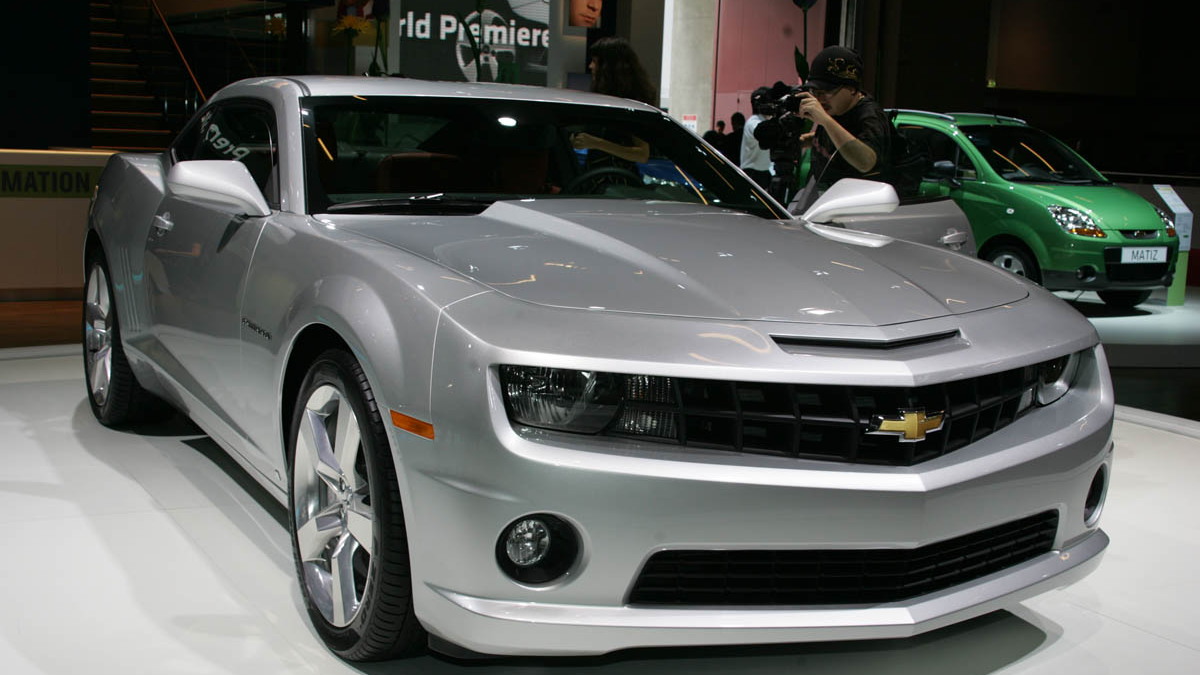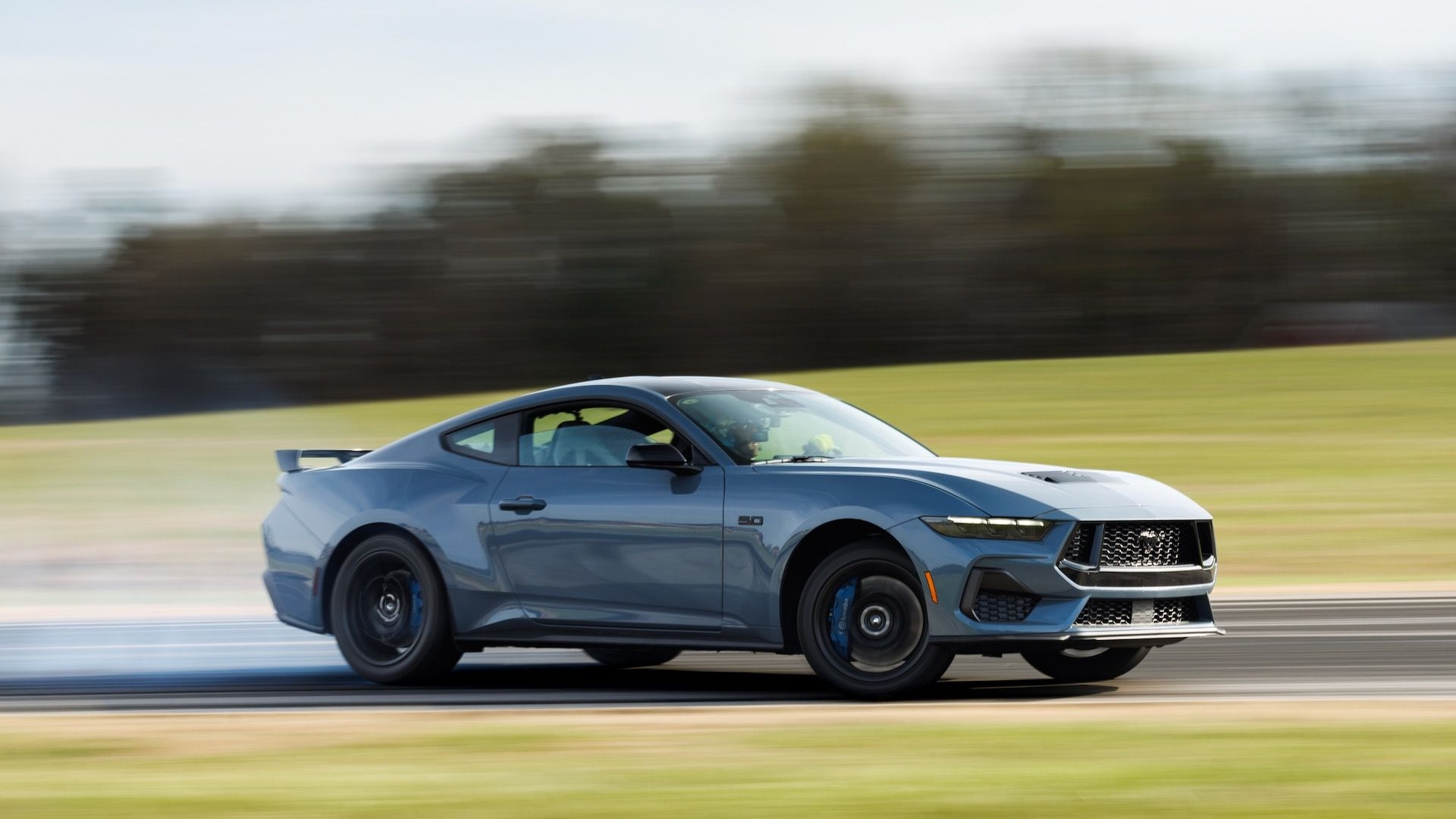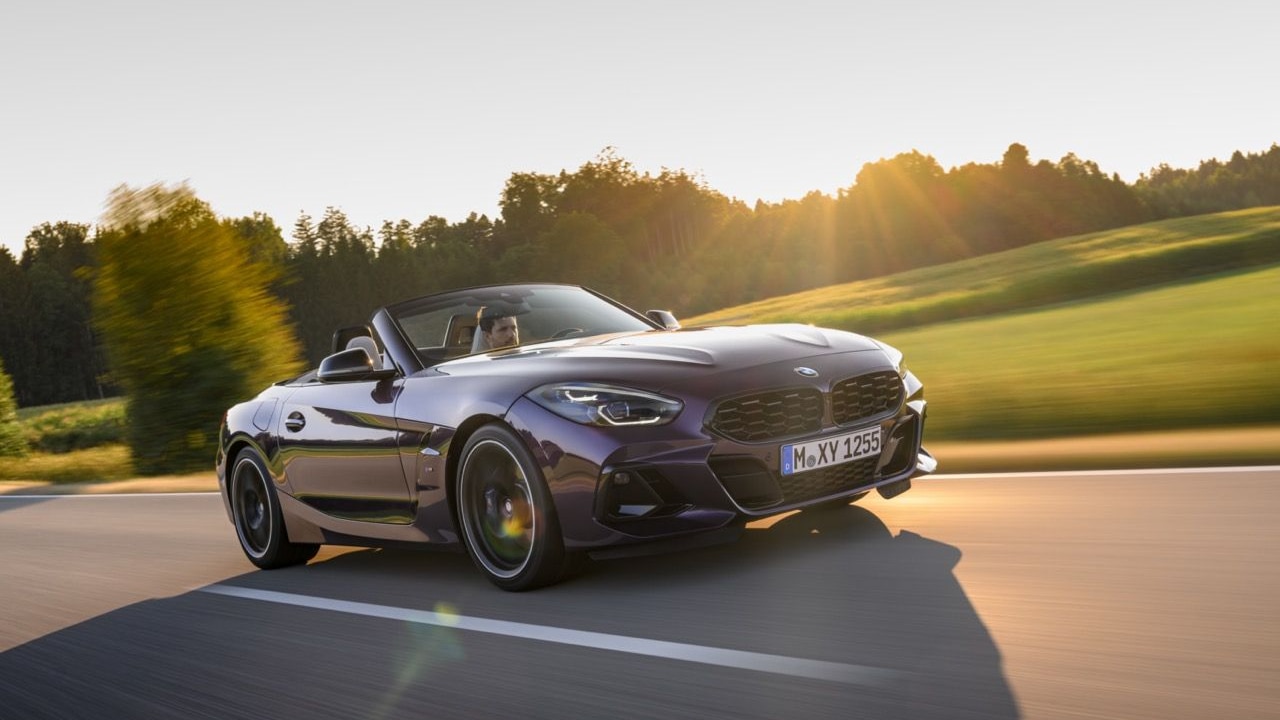Since 2006, General Motors has been teasing the automotive world with the Camaro Concept, and now the production car is officially revealed to the world. Due to start production February 16th, 2009, the car is being marketed as a high-tech and efficient high-performance car targeted at sports enthusiasts with a mind to fuel consumption and style.
Unveiled at the GM Design Center with the tag line of a ‘fun, efficient sports car for the 21st century’, the 2010 Chevrolet Camaro has set itself a high mark to achieve, and the conversion from pony or muscle car to sports car may leave fans of past cars out in the cold while failing to live up to the standards of would-be converts in love with flickable German and Japanese alternatives. Nonetheless, the dramatically styled Camaro is gunning for it all with this all-new model, naming its key competitors as the Dodge Challenger, Ford Mustang and, in an interesting turn, the Nissan 350Z.
Standard U.S.-market models include LS, LT and SS models. Rumors of a super-high performance Z28 model are still circulating, but so is talk that the car has already been killed due to tough CAFE standards. An RS visual package (pictured on the car below) will be available on LT and SS trim models. The package includes 20in wheels, HID headlamps with integrated halo rings, and a unique rear spoiler and tail lights.
The car’s drivetrain is as expected, with either six-speed manual or automatic transmissions, with a 3.6L direct-injection V6 rated at 300hp (224kW) and 273lb-ft (370Nm) of torque. The 6.2L LS3 V8 is rated at 422hp (314kW) and 408lb-ft (553Nm) of torque in manual guise and the 6.2L L99 V8 is good for 400hp (299kW) and 395lb-ft (535Nm) of torque in automatic form. There is still no word on the turbocharged four-cylinder that’s been rumored as a possibility for the past several months. The V6 is reportedly offering an estimated 26mpg highway, with a 23mpg rating for the V8 on the open road. Fuel efficiency is enhanced in the automatic-equipped V8 models with Active Fuel Management.
The transmissions available include the Hydra-Matic 6L50 six-speed auto for LS and LT trims and the Hyrda-Matic 6L80 for the SS - both autos have manual 'tap-shift' capability. Should you choose to row the cogs yourself, an Aysin-Warner AY6 six-speed manual is fitted in the LS and LT trims, with a Tremec TR6060 six-speed in the SS.
Weight distribution is pegged at 52/48 front/rear, with overall weight tipping the scales at a hefty 3,741lb (1,700kg) in its lightest form, ranging up to 3,913lb (1,779kg) in SS trim with the auto transmission. That means the Camaro will almost certainly outweigh its close Mustang rival once that car is refreshed for the 2010 model year, but it will slide under the Dodge Challenger’s even more massive 4,100lb (1,863kg) curb weight, enough to make up for a considerable amount of horsepower - which is a good thing considering the SRT8 Challenger’s Hemi V8 is good for 420hp (313kW) and 420lb-ft (567Nm) of torque, more than even the Camaro SS’s 6.2L LS3 V8.
The Challenger R/T’s 5.7L Hemi is rated at 375hp (276kW) and 398lb-ft (540Nm) of torque, which should still prove more than a match for the V6-powered Camaro, though the GM offering should have no trouble trouncing the base-level V6-equipped Challenger, rated at 250hp (186kW) and 250lb-ft (339Nm) of torque.
The car should be a considerable upgrade in the handling department, compared to the last Camaro to see production, thanks to its fully independent suspension and stability control - which features competitive and sport modes plus launch control on SS models. Together with its completely modern chassis, based on the Zeta platform co-developed with GM’s Australian Holden operations, the new Camaro could turn out to be a surprisingly able beast on track. LS and LT models will get the standard FE2 suspension package while the SS gets an upgraded FE3 performance suspension. Four-wheel disc brakes are standard across all models, though the SS gets larger rotors with four-piston Brembos at each corner.
Whether the more handling-oriented suspension design will interfere with what will likely become the Camaro enthusiast’s ultimate mission in life - straight-line speed at the drag strip - is yet to be determined, though independent rear suspensions are notorious for inducing wheel-hop in some high-horsepower configurations, a factor that does not bode well for hard launches and quick ETs. A range of 18, 19 and 20-inch wheels will offer style and large platforms for abundant grip.
Some of the smaller elements of the Camaro add to the car’s relatively high-tech feel, such as frameless door windows with computer-controlled indexing and Bluetooth capability, along with a premium Boston Acoustics sound system and XM Satellite radio.
Right-hand drive models have been confirmed, and will be available for the UK market soon after U.S. launch. Other right hand drive markets, such as Australia and South Africa, are not yet announced, though they are likely candidates for the muscle car.
You can see the recorded webcast of the car's unveiling with GM's head of design Ed Welburn and Chevrolet general manager Ed Peper at the official site, located here.









